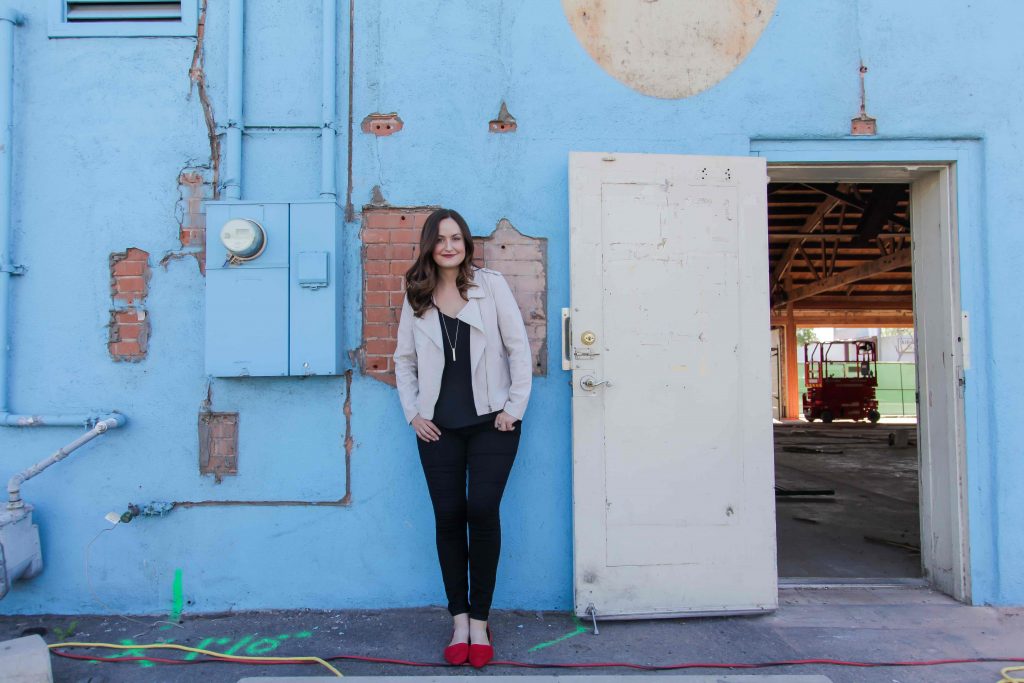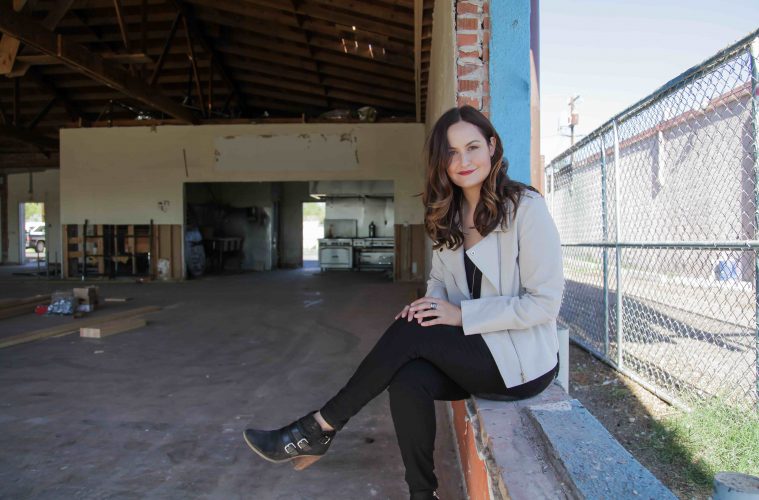
The intersection of 3rd Avenue and Roosevelt is a well-traveled one. On the northeast corner stand some old haunts (Pita Jungle, Lola Coffee); northwest, the Fontenelle House Lofts (1912); southeast, apartments and offices; and southwest, a fenced lot promising something new. Walking distance from Margaret T. Hance Park, the Crescent Ballroom, and just west of the First Friday carnival, this intersection offers a microcosm of what you see all up and down Roosevelt – familiar, yet character-filled buildings that have been there for decades, some housing the last tenants of the arts district.
Glistening high-rises have been built in the wake of razed structures once home to the original scene-makers, priced out and unable to renew their leases – you know, the ones who brought the buzz that pricked up the ears of developers to begin with. It’s fodder for a classic Joni Mitchell song.
A few paces south of this intersection, at 826 N. 3rd Avenue, is the historic Henry Campbell House. Built in 1910 and purchased by Ashley Harder in 2012, the Campbell House is one of the projects taken on by Harder Development, the company Ashley founded in 2011 to “provide the local community with warm, unique spaces – reminiscent of Main Street shops from a simpler time,” according to their mission statement.
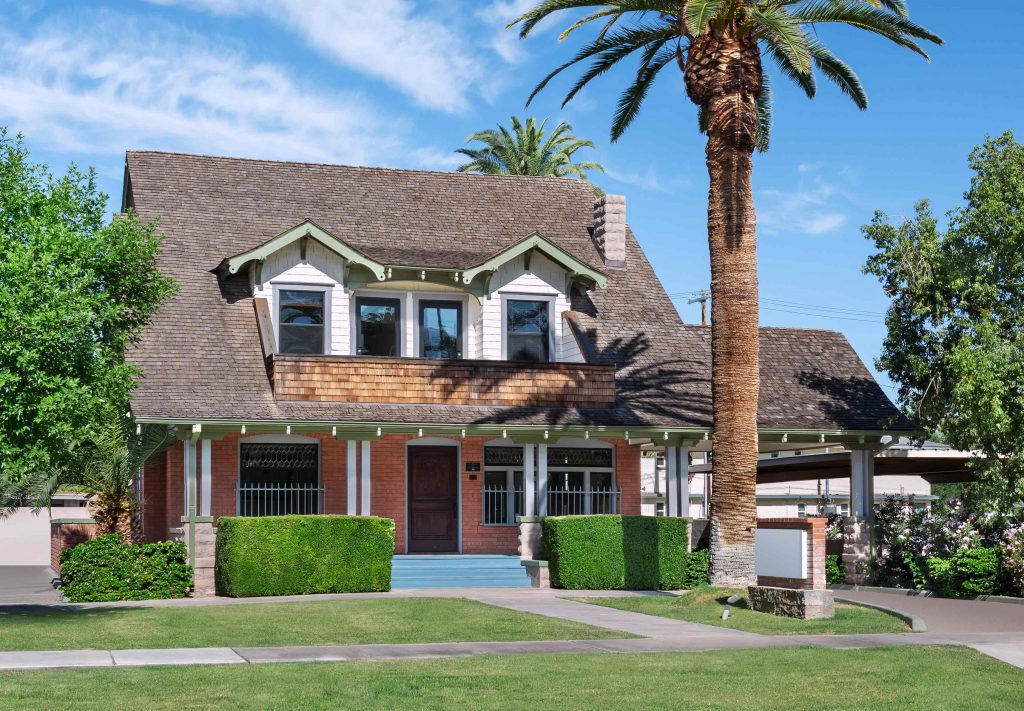
Discussing the changes in the surrounding neighborhood, Harder makes note of the area’s progress and how talking about the change and growth of downtown is “what Phoenicians love to do, right? Sit around and talk about old Phoenix.” She laughs, following the statement with a genuine, warm “I love it.” It is a favorite pastime of Phoenicians, though, to discuss things in terms of before and after one thing was torn down and another built in its place. These conversations allow locals to express pride in place and dismay at the passage of time and how not all change is good, as well as enjoy a familiarity and camaraderie that only come with having stayed in one place for a very long time.
This turns, inevitably, to the discussion of what length of time qualifies a person as a Phoenician. “Everyone has their opinion,” Harder says, and then there’s her own tenure in the city. “I came here for nine months when I was 18 years old – very randomly. I hadn’t been to Arizona before, and it made an impression. I made friends and came back years later. So I have that perspective of roughly 20 years, and I would say for the first ten, I would not qualify myself as a Phoenician at all, but now that I’ve done enough work here, lived here, made it my home, been here through a lot of changes, I now am like, ‘Okay, it’s my second home.’”
When asked about what drew her to Phoenix, Harder answers in a way reminiscent of Tom Waits answering questions about his background. “You know, every time I’m asked that or similar to a question like, ‘What made you interested in adaptive reuse?’ or ‘Why real estate?’ or something, I’ll answer it ten different ways depending on my mood. There are so many reasons why Arizona was appealing to me. I’m from Boston, and it’s just a completely different culture, landscape, everything, and to me that was really exciting.” Specifically, she points to the beauty and relative youth of Phoenix in relation to her hometown – and, of course, how spread out everything is in comparison.
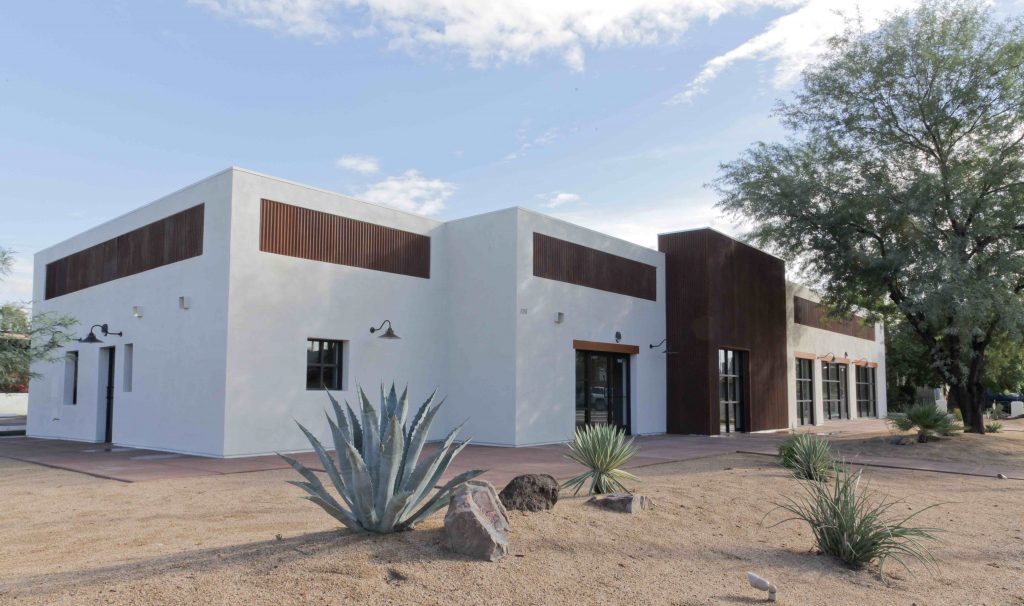
Harder’s initial experience of the city was not love at first sight: she had settled into a portion of Phoenix along I-17 and Peoria, notable for a Waffle House, Metrocenter, and Castles and Coasters, leading to an understandable “What have I done?” moment. Certainly toward the end of the last century and on into the early years of this one, mall culture held significant sway over the Phoenix metropolitan area. And then, too, there was all the building, ever outward, at the height of subdivisions and planned communities. Despite the pervasive culture of consumerism, Harder found that there was something about Phoenix that drew her in.
“What I found, and why I came back, is that [Phoenix] to me was this place of possibility. I’ve always felt this creative energy in the desert, and it was also a place that allowed me to be independent. Being from Boston, it’s an expensive place to live. It’s a competitive place, and I wanted to take a different path and explore. I started to really appreciate certain spaces, like being able to go to Modified and walk around Roosevelt and check out what was going on at night, and you kind of felt like you owned the city. That’s a really empowering feeling when you’re young, and I just wanted to stay around for that. Then, when I started to really develop my interests and what I wanted as far as work and lifestyle, I recognized, ‘Oh, my gosh, I can do it here!’”
That interest being development in general and adaptive reuse in particular – something that Harder says stems from the “ecosystem of creativity – it’s just a different application. There are elements of it that are very formulaic, and very much driven in business and finance. But it’s also this huge opportunity to be creative. I understand why artists often take care of historic properties and put their businesses in unique buildings, becoming caretakers of the spaces that create these communities.”
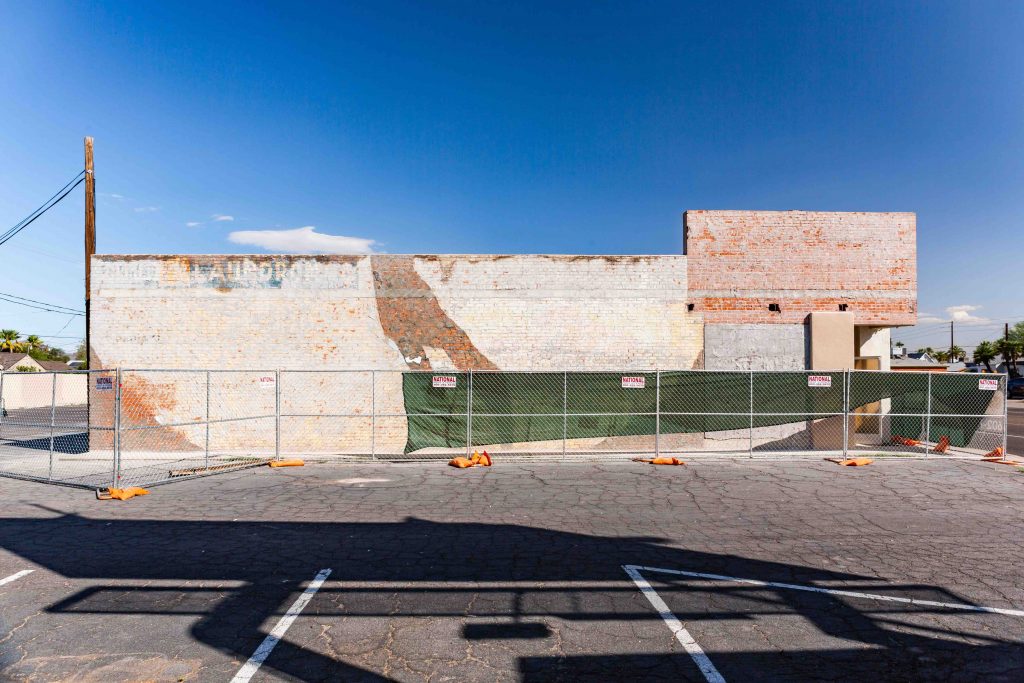
Harder’s interest coincided – as many new chapters of Phoenix entrepreneurs do – with the economic recession that hit hard in the twilight of this century’s first decade. “I was similar to other people during that time in that I lost my job. I was working for a medical practice, and they sold the business because of the recession. I really had to take a hard look at ‘What is the next step?’ and I really put a lot of pressure on myself to figure it out. I was also approaching 30, and I had all those pressures of ‘Let’s just figure it out, and not have any more false starts.’”
With the example of her sister’s creation of a real estate business based on her personal interests, Harder says her “desire to participate in the growth of small businesses in the neighborhood” inspired her to purchase and renovate a building. She broke it down into smaller spaces to meet the needs of businesses forced to downsize during the recession, the ones that wanted to localize and work in the community. This process of breathing new life into an old building is referred to as adaptive reuse. It melded with Harder’s interest in aesthetics, as well as working with creatives, “and all of a sudden, all these interests came together, and then it was like, ‘Oh, yeah, I love this. I don’t want to do anything else.’”
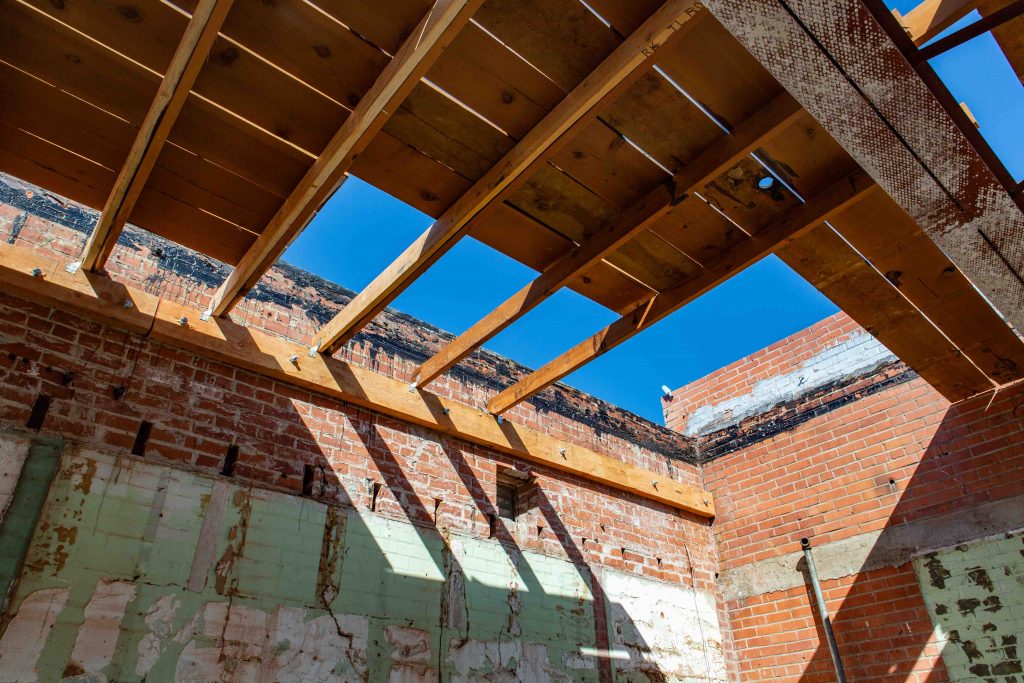
In its nearly ten years, Harder Development’s mission has been “to contribute to an overall higher quality of life shared by the people who choose to work, live and play in downtown Phoenix.” Harder has found other avenues to fulfill her interests in community growth and the arts, as well. As a member of Local First AZ’s new For(U)m initiative – which takes Local First’s mission of making informed decisions about consumer spending, and then focuses on the development and design community – Harder is able to cultivate a network of support for Arizona-based companies specific to her field. She takes part in an evolving array of events and programming for the initiative, and the connections she makes mean that the companies she contracts with to work on her projects are part of the community she’s working to improve.
Harder’s interest in the promotion and curation of art, as well as her gallery experience (she co-ran Treeo on 6th and Garfield), led her to develop a working relationship with veteran local artist Jim Covarrubias. She is currently working on a project to digitally preserve videocassettes of Covarrubias in conversation with other artists.
To date, Harder Development has completed renovation of three historically designated properties in the Roosevelt neighborhood: 335 Commons (335 W. McDowell Rd.), the aforementioned Campbell House, and Carline Center (1018 W. Roosevelt). Harder’s newest project, Clio, located in the historic Miracle Mile district on McDowell Rd., is expected to be completed in early 2020.
www.harderdevelopment.com
